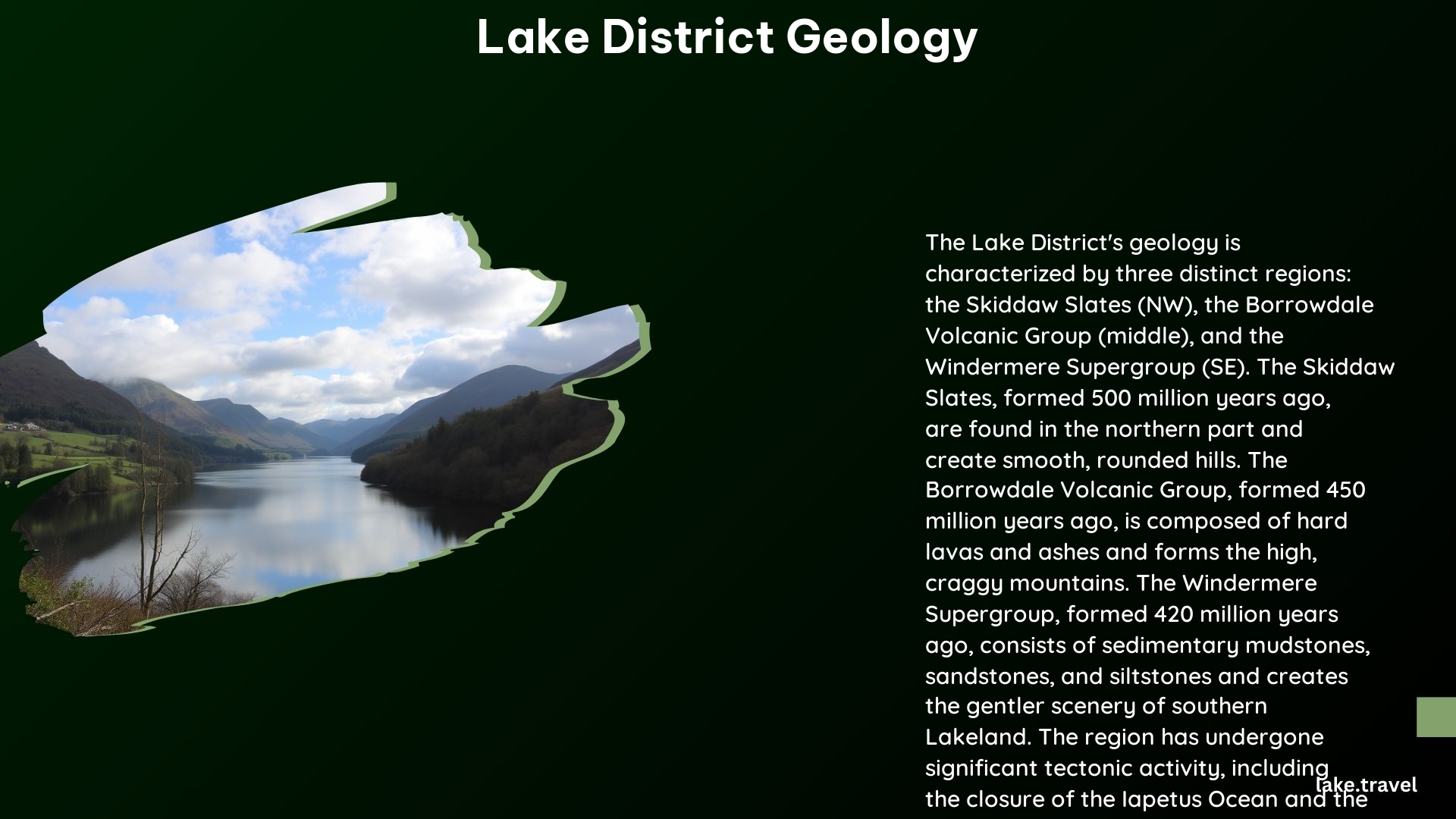The Lake District in England is renowned for its stunning natural beauty, shaped by millions of years of geological processes. From the ancient Skiddaw Slates to the dramatic Borrowdale Volcanics, the region’s diverse rock types and fascinating history have created a landscape that continues to captivate visitors from around the world.
Main Rock Types of the Lake District

The Lake District is home to a diverse array of rock types, each with its own unique story to tell:
| Rock Type | Age | Description |
|---|---|---|
| Skiddaw Slates | 500 million years old | The oldest rocks in the Lake District, formed from black muds and sands that settled on the seabed. These rocks are found mainly in the north of the National Park and form smooth mountains. |
| Borrowdale Volcanics | 450 million years old | Formed from catastrophic volcanic eruptions, these hard lavas and ashes make up the highest and craggiest mountains, such as Scafell, Helvellyn, and the Langdale Pikes. |
| Windermere Supergroup | 420 million years old | Sedimentary rocks formed in the sea, later folded and faulted, pushed up, and eroded to form the gentler scenery of southern Lakeland. |
| Granite | 400 million years old | Formed deep below the Lake District, erosion has revealed outcrops in Eskdale, Ennerdale, and at Shap. |
Geological History of the Lake District

The geological history of the Lake District is a fascinating tale of plate tectonics, volcanic activity, and glaciation:
Ordovician Age
The Lake District is dominated by sedimentary and volcanic rocks of mainly Ordovician age, underpinned by large granitic intrusions.
Mesozoic Era
The area was covered by a Mesozoic sequence that was eroded off during the Paleogene uplift related to the opening of the North Atlantic.
Cenozoic Era
The Lake District was affected by repeated glaciations, which sculpted the current mountainous landscape. The most recent period of glaciation was the Devensian, which occurred from 115,000 to 11,700 years ago.
Quaternary Period
The current landscape is the result of the Last glacial period, which occurred over the period 115,000 to 11,700 years ago.
Geological Features of the Lake District
The Lake District’s diverse geology has created a range of distinctive geological features:
U-Shaped Valleys
Formed by glacial erosion, these valleys are characteristic of the Lake District landscape.
Steep Ridges
The craggiest mountains, such as Scafell and Helvellyn, are formed from the harder volcanic rocks that have withstood erosion.
Lakes and Tarns
The Lake District has over fourteen lakes and tarns, which are able to store large volumes of water due to the volcanic rock and high rainfall.
Plate Tectonics and the Lake District
The evolution of the Lake District is closely tied to plate tectonics, with the region being part of the Lakesman-Leinster Terrane (LLT). The tectonic model applied to the Lake District involves rewinding plate motions to the time of deposition to understand basin configuration and palaeoslope orientations.
Tourism and the Lake District Geology
The Lake District’s stunning geological features have made it a popular tourist destination, with millions of visitors each year drawn to its scenic beauty. Tourism now dominates the local economy, with many public footpaths and bridleways providing easy access to the region’s geological wonders.
References
- https://en.wikipedia.org/wiki/Geology_of_the_Lake_District
- https://www.lakedistrict.gov.uk/learning/geology
- https://www.chimpinvestor.com/post/how-the-lake-district-was-formed-in-three-minutes
- https://webapps.bgs.ac.uk/Memoirs/docs/B06089.html
- https://englishlakedistrictgeology.org.uk/?Chapters%3ALAKE_DISTRICT_EVOLUTION_IN_A_PLATE_TECTONIC_CONTEXT
